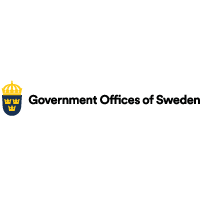
The theme for the United Nations Environment Assembly on 22–23 February was ‘Strengthening Actions for Nature to Achieve the Sustainable Development Goals’. UNEA 5 was one of the first large assemblies since the pandemic began, and because of COVID-19 it was split into two parts, a virtual assembly this year and an in-person assembly in Nairobi in March 2022.
The Assembly agreed on a statement from the environment ministers concerning green recovery, urging the UN’s member states to re-invest in green technology, including nature-based solutions.
During the ‘leadership dialogue’, the Swedish Minister for Environment and Climate Per Bolund emphasised that the path to recovery after COVID-19 presents an opportunity to create a more sustainable and fossil-free society, and to find global solutions to the problems of pollution, climate change and loss of biodiversity.
UNEA 5 also adopted a number of resolutions that are necessary to enable the United Nations Environment Programme (UNEP) to function – as a strategy for the period 2022–2025 and a programme of work and budget for 2022–2023.
The Assembly agreed that the UN member states should make joint efforts to tackle plastic litter in the oceans. There is no global agreement today that adopts an integrated approach and regulates the entire life cycle of plastics, but several virtual events highlighted various ongoing initiatives. The member states showed increased belief in a global agreement governing marine plastic litter and microplastics being part of the solution. Minister for Environment and Climate Per Bolund expressed hope that a decision on formal negotiation on an ambitious global agreement will be adopted at the in-person assembly in 2022. German Ambassador Annett Guenther announced that Germany, Ghana and Ecuador will host a ministerial conference later this year to pave the way for such a decision.
UNEP marks 50 years in 2022
UNEP was formed as a result of the 1972 Stockholm Conference, and the organisation will mark its 50th anniversary in March 2022. The anniversary, called UNEP@50, was launched during UNEA.
Sweden plans to arrange the high-level meeting Stockholm+50 at the beginning of June 2022 to highlight issues concerning our relationship with nature, sustainable consumption and production, green recovery and a strong youth perspective, as well as mobilising the international community behind strengthened implementation and action. The meeting is linked to UNEP@50 in so far as both events in 2022 aim to contribute towards strengthening international environmental cooperation.
UNEP’s environmental work over 50 years
The United Nations Conference on the Human Environment held in Stockholm and the formation of the United Nations Environment Programme (UNEP) in 1972 marked the start of global environmental efforts.
UNEP initially made itself known for its work against depletion of the ozone layer in the atmosphere. Today, UNEP operates in seven areas: climate change, disasters and conflicts, ecosystem management, environmental governance, chemicals and waste, resource efficiency and environment under review. UNEP’s work is 95% funded by the member states and other partners, and a large proportion of the funding is earmarked for various projects. Sweden is one of the fifty largest contributors to UNEP and endeavours to ensure that UNEP continues to be an effective organisation and can be strengthened in its remit globally.
UNEP’s remit is to take initiatives for new global provisions, policy and agreements in the environmental area, develop and disseminate knowledge about the environmental and climate situation in the world and coordinate environmental efforts within the UN. Since the Sustainable Development Goals were adopted under the 2030 Agenda, UNEP has reported globally on the implementation of several goals concerned with the environment, for example Goal 12 on Responsible Consumption and Production. UNEP also plays an important role in the implementation of the environmental dimension of the 2030 Agenda globally.
Over the 50 years that have passed since UNEP was formed, the member states of the UN have agreed on a number of conventions that guide work on the environment and climate at the international level and in the long term. These are continuously developed through conferences of the parties, where the member states meet to negotiate and make decisions.
The secretariats for several of these conventions are at UNEP. This applies, for example, to the Convention on Biological Diversity (CBD), the Convention on International Trade in Endangered Species of Wild Fauna and Flora (CITES) and the Convention on the Conservation of Migratory Species of Wild Animals, (CMS).
Other UN conventions have come into being to govern pollution and hazardous substances, such as ozone (Vienna Convention), mercury (Minamata Convention), persistent organic pollutants (Stockholm Convention) and control of transboundary movements of hazardous wastes and their disposal (Basel Convention), where rules on export of plastic waste are an important issue. UNEP also coordinates the Strategic Approach to International Chemicals Management (SAICM).